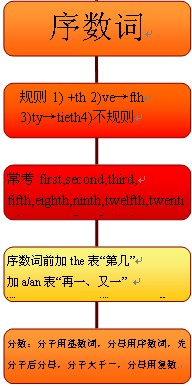任务型阅读(满分10分)
请认真阅读下面短文,并根据所读内容在文章后图表中的空格里填入最恰当的单词。
注意:每空只填一个单词。
“Happy New Year!” Everyone will greet each other with these words as they meet each other on New Year’s Day. But it wasn’t always January 1 that marked the New Year.
At least 4,000 years ago, the ancient Egyptians and Babylonians marked the changing of the year. In Egypt, the year started when the Nile River flooded, enriching farmers’ fields. This happened at the end of September.
The Babylonians held a festival in the spring, on March 23, to kick off the next farming cycle. The Babylonian celebration lasted for 11 days.
The date January 1 was picked by the Roman Emperor Julius Caesar as the change of the year when he established his own calendar in 46 BC. The month of January originates from the Roman god, Janus. He is pictured with two heads. One head looks forward and the other back. They represent a break between the old and new. The new calendar was in time with the sun and it has been used until the present day.
In Vietnam, the New Year holiday happens in February. They buy fresh flowers and a peach blossom to put in their house, following the Vietnamese custom.
Thailand has its specific New Year’s date; it’s different from the normal calendar. The Thai New Year is celebrated on April 13. On this day, Thai people play with water, throwing it on each other. It is intended to bring good luck during the New Year ahead.
In China, the more favorable New Year is usually celebrated in February according to lunar calendar (阴历). On New Year’s Eve, all family members sit together at table, enjoying lots of auspicious foods such as dumplings, chicken to bring good luck.
Title: New Year traditions all around the world
Countries
| 小题1:___________
| Origins(起源)or activities
| Meanings or reasons
|
Egypt
| the end of September
| the Nile River flood
| make fields 小题2: _____________
|
Babylon
| March 23
| holding a 小题3:___________
| kick off the next farming cycle
|
Rome
| January 1
| Roman god, Janus
| 小题4:_________ a break
|
|
本试题 “任务型阅读(满分10分)请认真阅读下面短文,并根据所读内容在文章后图表中的空格里填入最恰当的单词。注意:每空只填一个单词。“Happy New Year!” Everyone ...” 主要考查您对 序数词 等考点的理解。关于这些考点您可以点击下面的选项卡查看详细档案。
序数词的概念:
表示顺序的数称为序数词。如:first, second, third, fourth。 序数词的构成与用法:
1、序数词的构成:
①一般来说,是由相应的基数词加词尾th构成。
例:four+th→fourth
six+th→sixth
seven+th→seventh
ten+th→tenth
②下面这些基数词在变为序数词时,有特殊的变化。
例:one→first
two→second
three→third
five→fifth
eight→eighth
nine→ninth
twelve→twelfth
③十位整数序数词的构成方法是将基数词的词y变成i,然后再加eth。
例:twenty→twentieth
thirty→thirtieth
forty→fortieth
ninety→ninetieth
④两位或两位以上的基数词变成序数词时,仅将个位数变成序数词。
例:twenty-one→twenty-first
thirty-five→thirty-fifth
a hundred and fifty-three→a hundred and fifty-third
2、序数词的用法:
①序数词在使用时,一般加上定冠词。
例:the first book
the second floor
the third day
the fourth week.
②序数词在多数情况下都用作定语,有的也可以作表语、主语和宾语。
例:The may1st is Labour Day. 五月一日是劳动节。
My room is on the second floor. 我的房间在二楼。
The first is larger than the secon.(主语)第一个比第二个大。
Read the book from the first.(宾语)从开头读这本书。
You'll be the sixth to write.(表语)你将是第六个写的。
③序数词的前面可以加上不定冠词,用来表示“再一”,“又一”的意思。
例:You may have a third try. 你可以第三次尝试。 序数词知识体系:

约数的表达方法:
用tens/dozens/scores/hundreds/thousands/millions of 表示“几十、几百、上千、成千上万”等。
如:The boy bought dozens of pencils.
Thousands of people died in the earthquake.
注意: (A):dozen, score, hundred, thousand, million等表示确切数量时,不用复数。
如:five dozen (of) eggs 五打鸡蛋
hree hundred people 三百个人
分数词的构成和用法:
1)分数词构成法:
分数词(FractionalNumerals)由基数词和序数词构成,基数词代表分子,序数词代表分母。除了分子为1的情况下,序数词都要用复数形式:
如:1/4:one-fourth
5/9:five-ninths
2/3:two-thirds
17/5:three and two-fifths
7/12:seven-twelfths
379/8:forty-seven and three-eighths
此外还有下面表示法:
如:1/2:a(one) half
1/4:a(one) quarter
3/4:three-quarters
9/4:two and a quarter
3/2:one and half
31/4:seven and three quarters
与“任务型阅读(满分10分)请认真阅读下面短文,并根据所读内容...”考查相似的试题有:
|